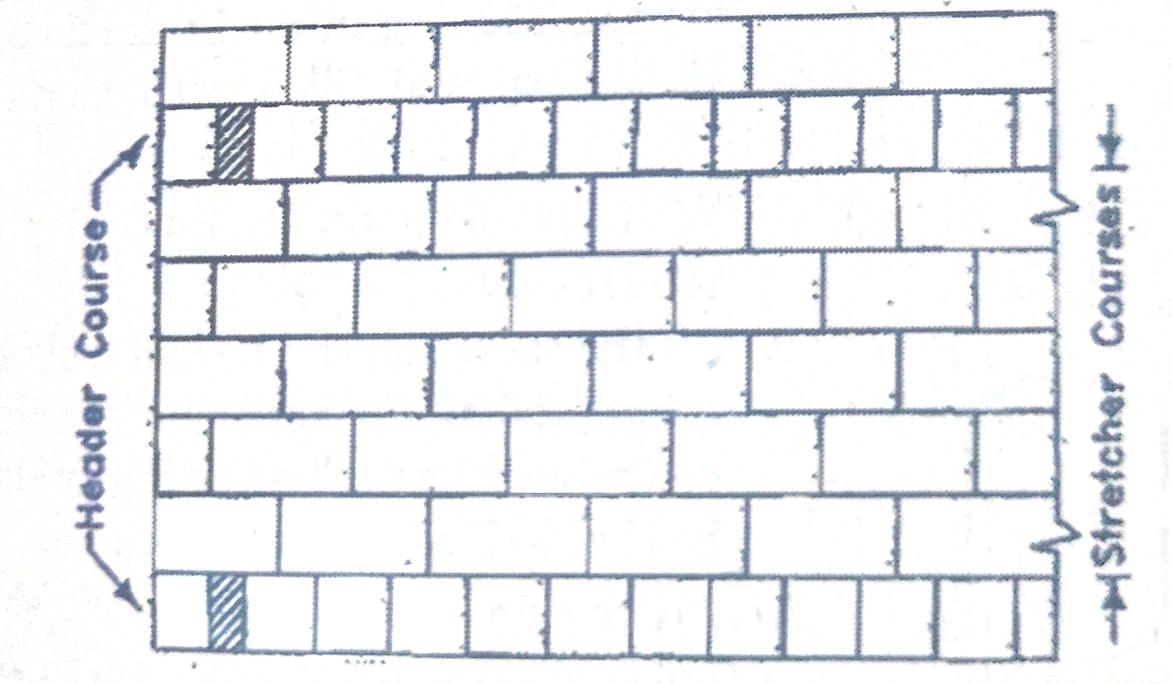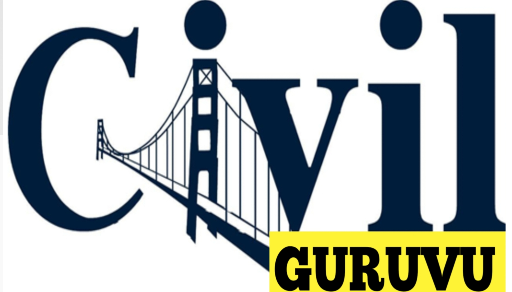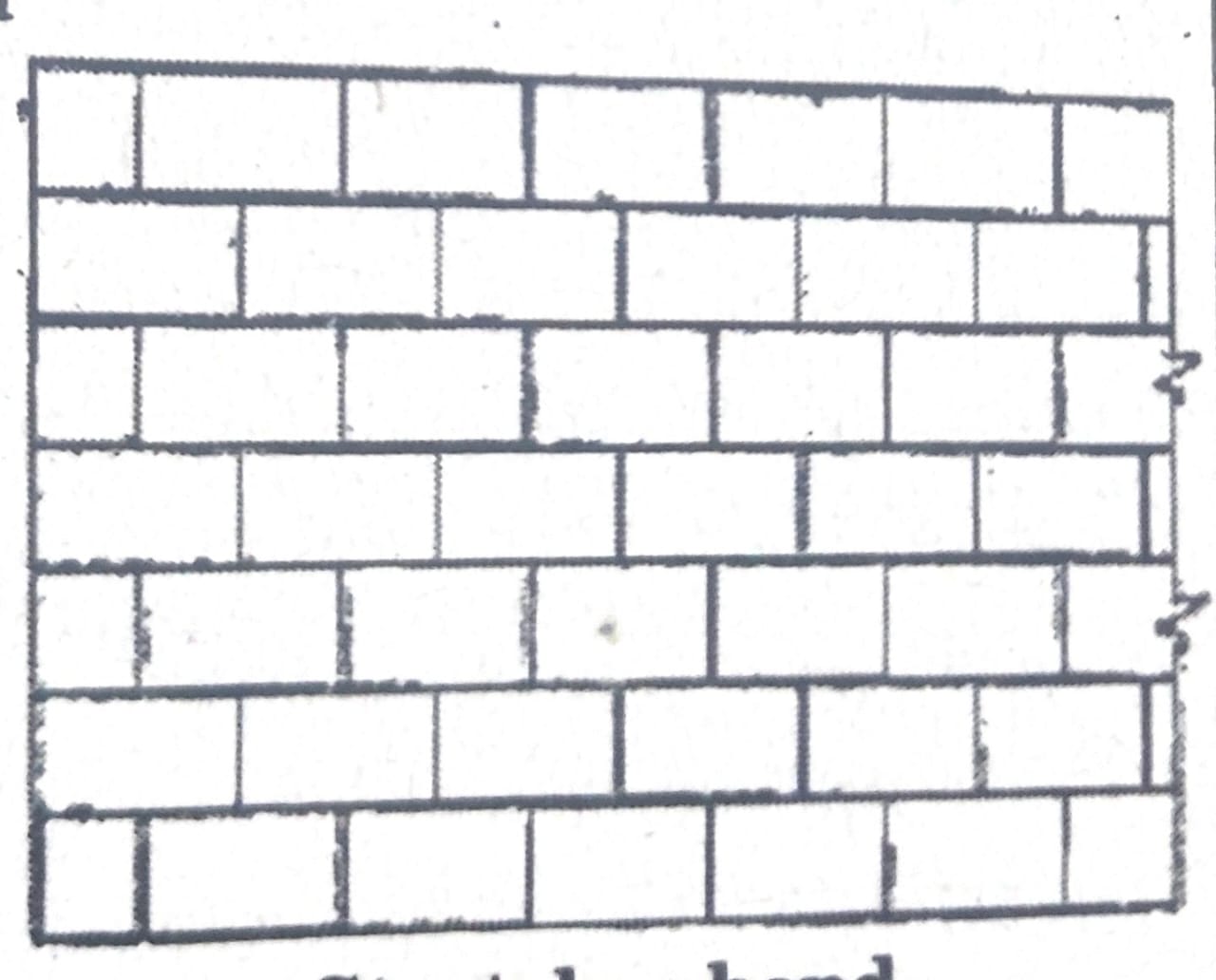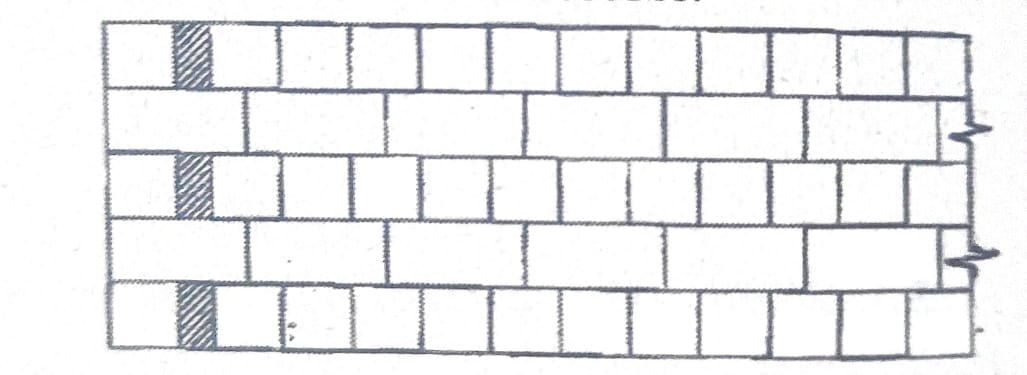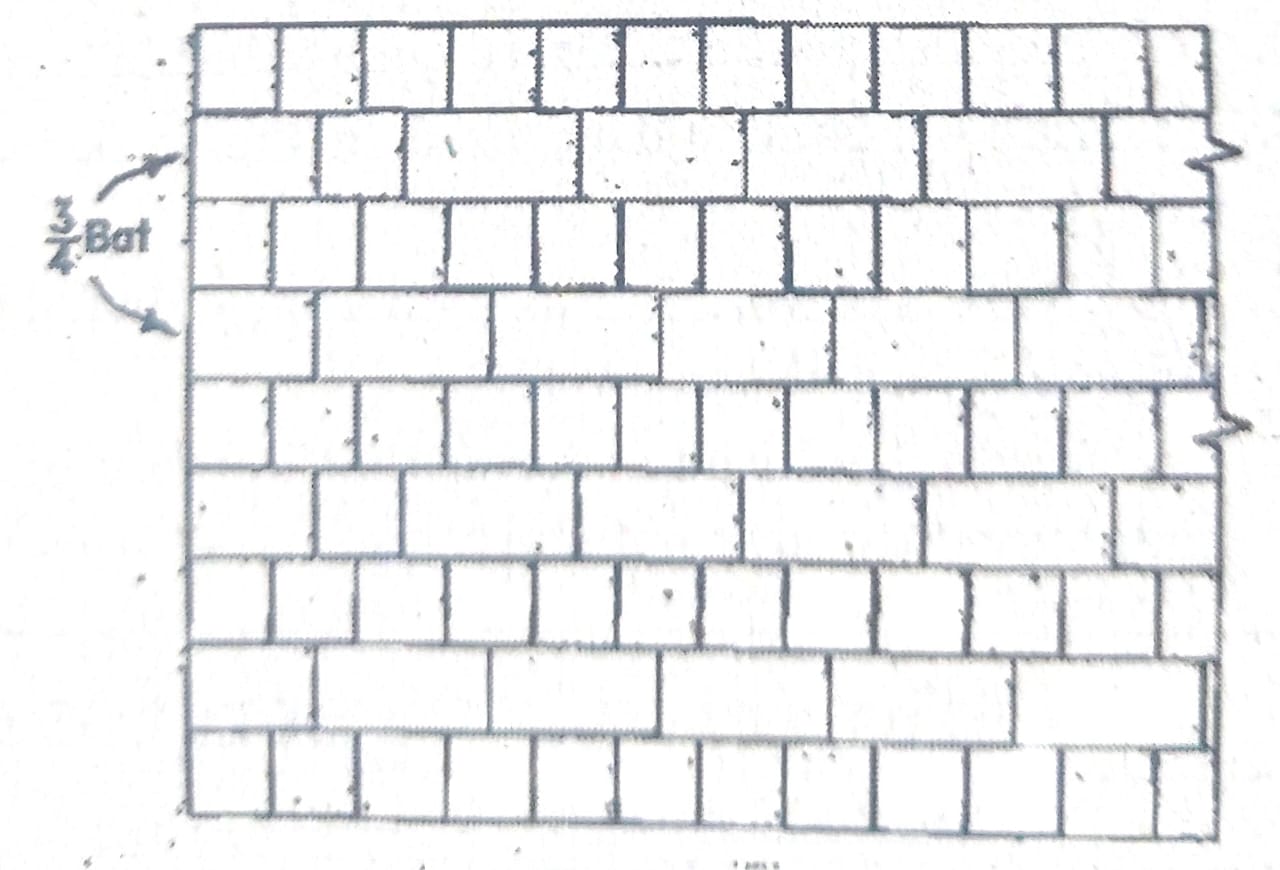BONDS IN BRICKWORK MASONRY
The different types of bonds commonly adopted are given below.
1. Stretcher bond
2. Header bond
3. English bond
4. Flemish bond 5. Garden wall bond
6. Raking bond
7. Dutch bond
8. Brick on edge bond
1. Stretcher bond: In this arrange- ment of bonding brick work all the bricks are laid as stretchers. It is commonly adopt- ed in the cavity walls and partition wall.
2. Header bond: In this type of bonding all the bricks are laid as headers on the face.

3. English bond: This is commonly used bond because it is stronger than the other bonds.
The important features of English bond
i. The bond consists of alternate course of headers and stretchers.
ii. A queen closer will be placed next to the first header in each heading course.
iii. A course consisting of headers on front face will show headers on the back face also in one brick, two brick, three brick thick walls.
iv. Continuous vertical joints are eliminated.
v. More quantity of cement mortar consumes in header course than stretcher course as for as pos- sible less quantity of cement mortar should be
4.Flemish bond

●Queen closers are inserted in alternate courses next to the quoin header.
●When 1 1/2, 2 1/2 brick walls are constructed bat bricks are also used with Ml brick. But when 1,2,3 brick walls are constructed only full bricks should be used.
●Flemish bond is weaker than English bond.
●Continuous vertical joints may occur in Flemish bond.
●Flemish bond renders the appearance of the face work more attractive and pleasing.
5.Garden wall bond – English bond Junction
